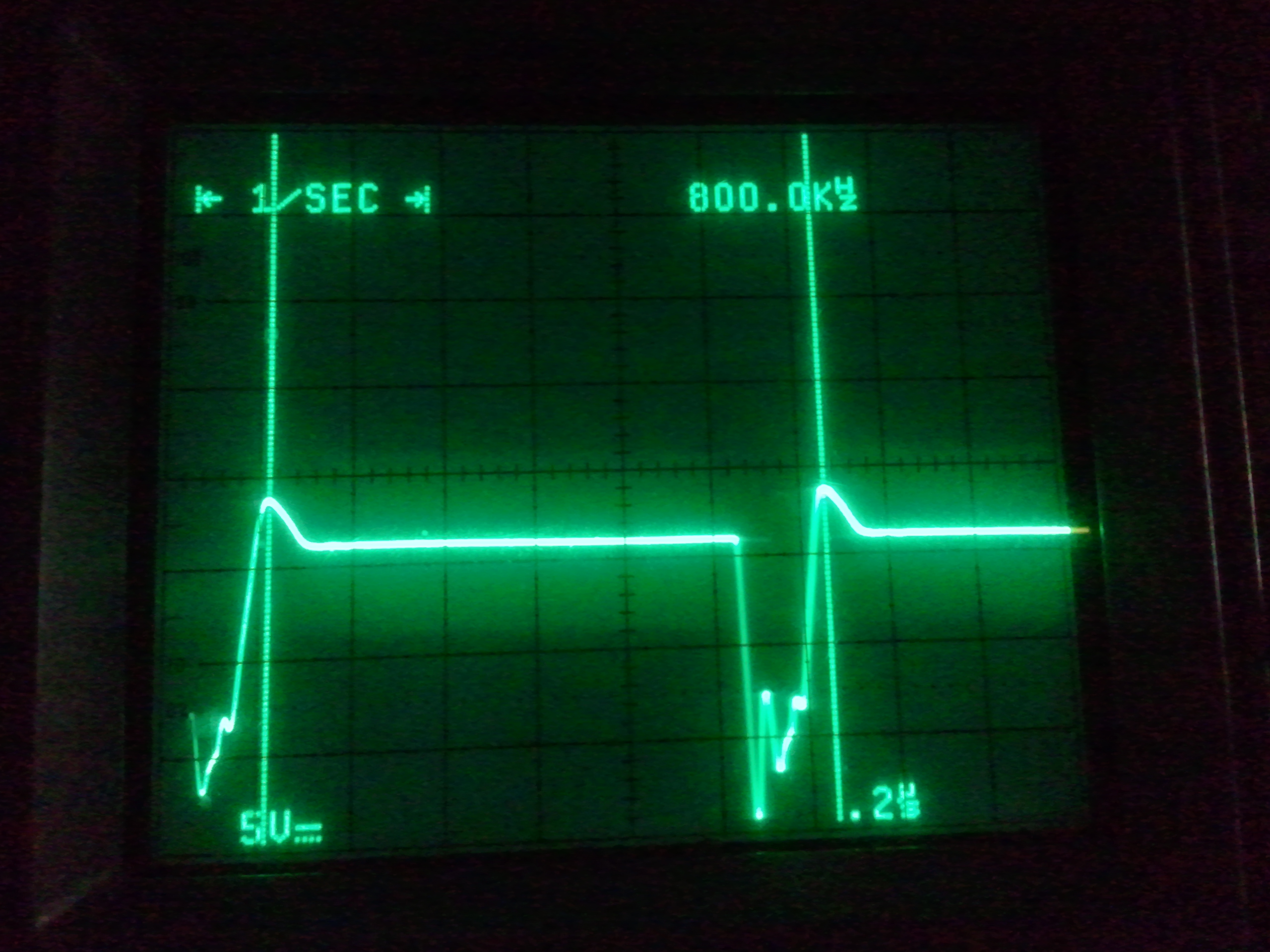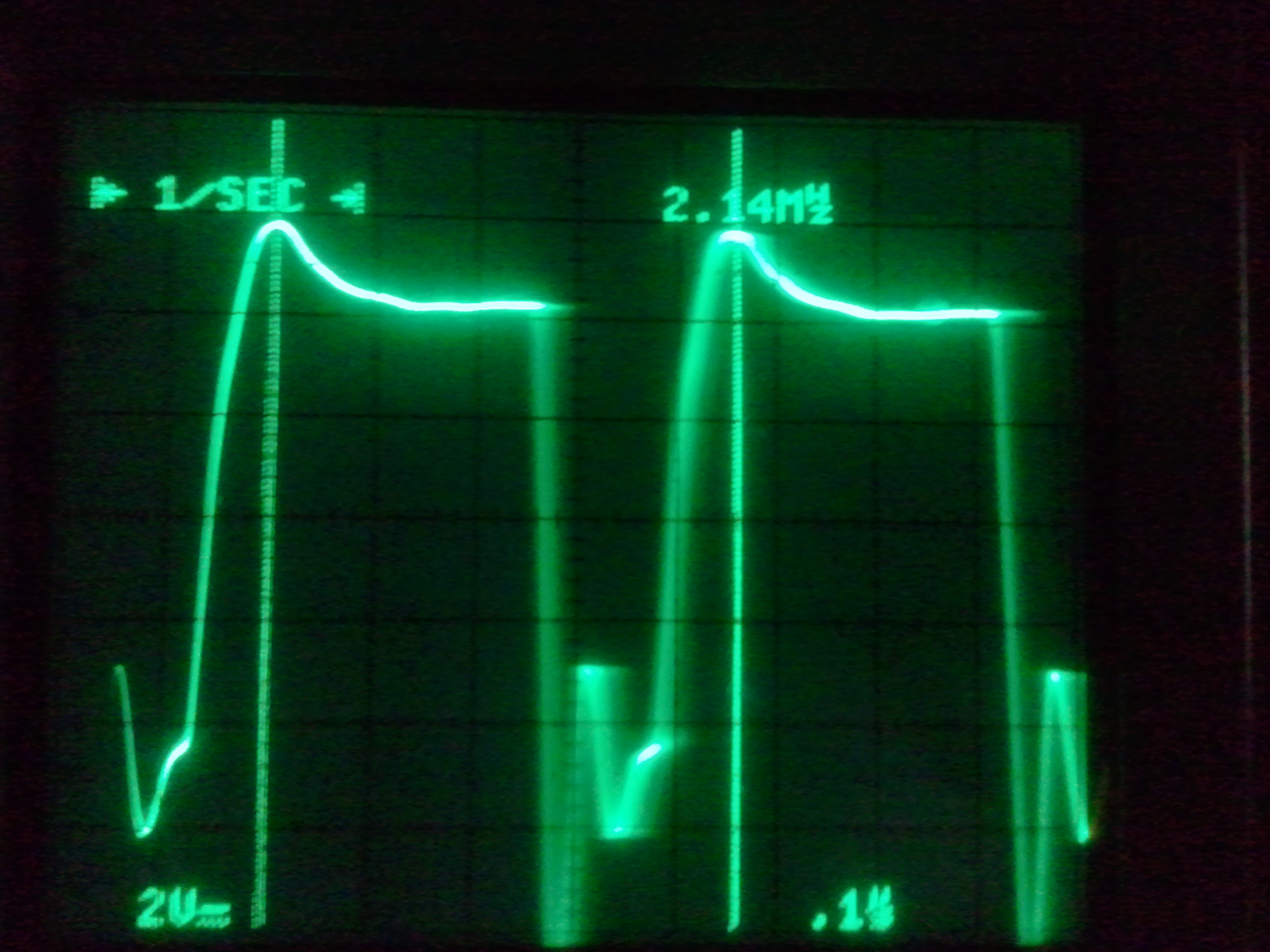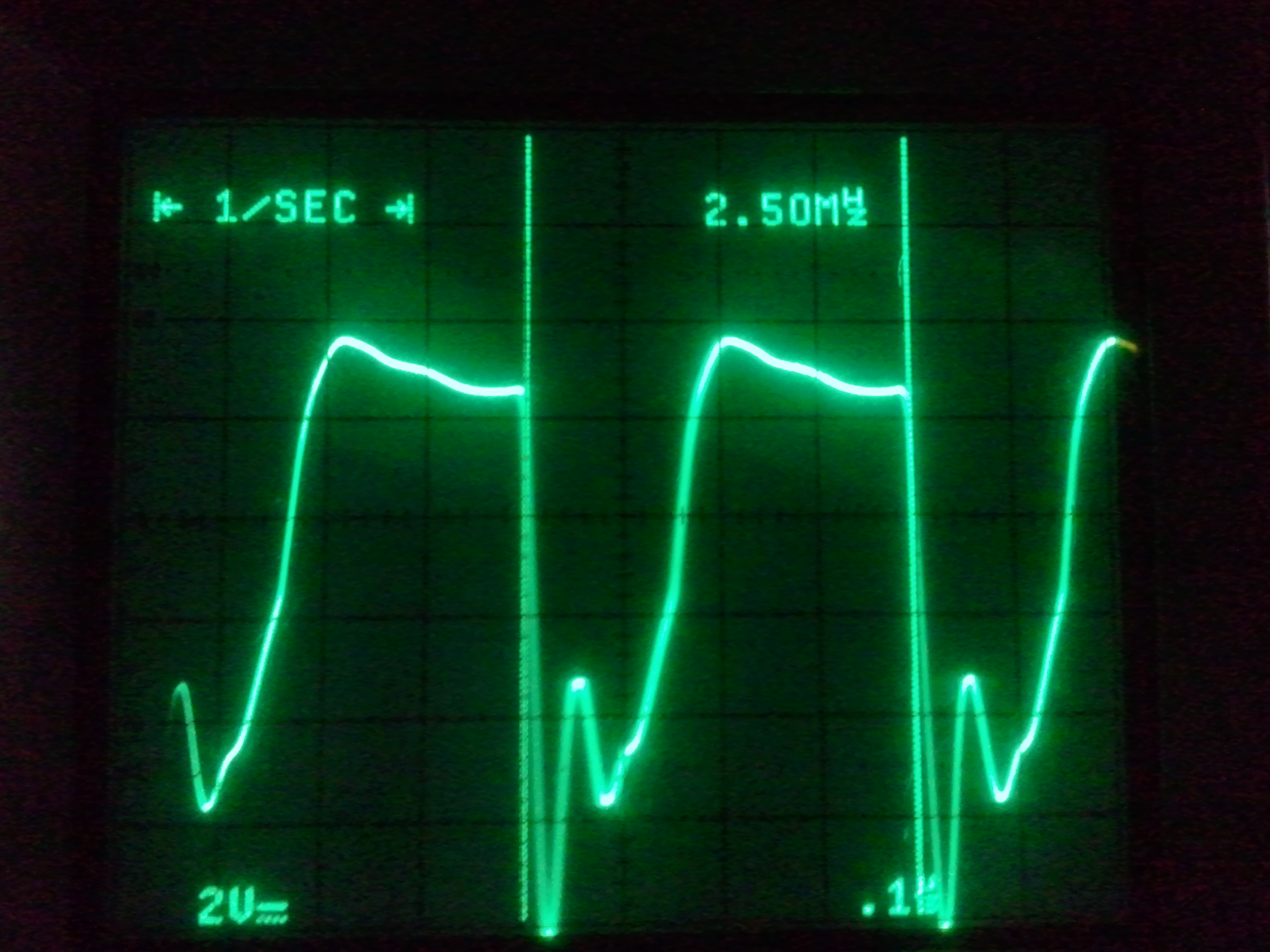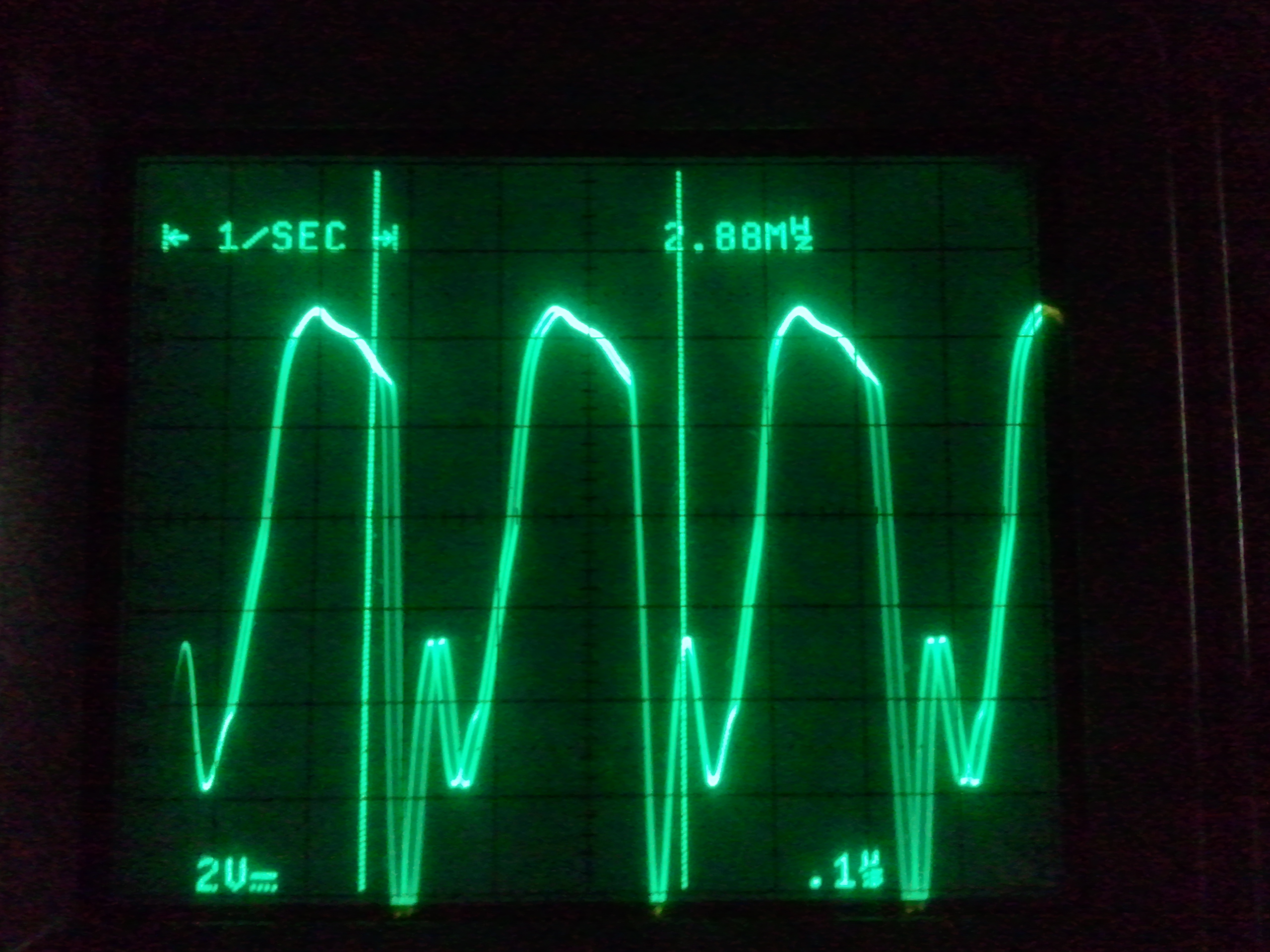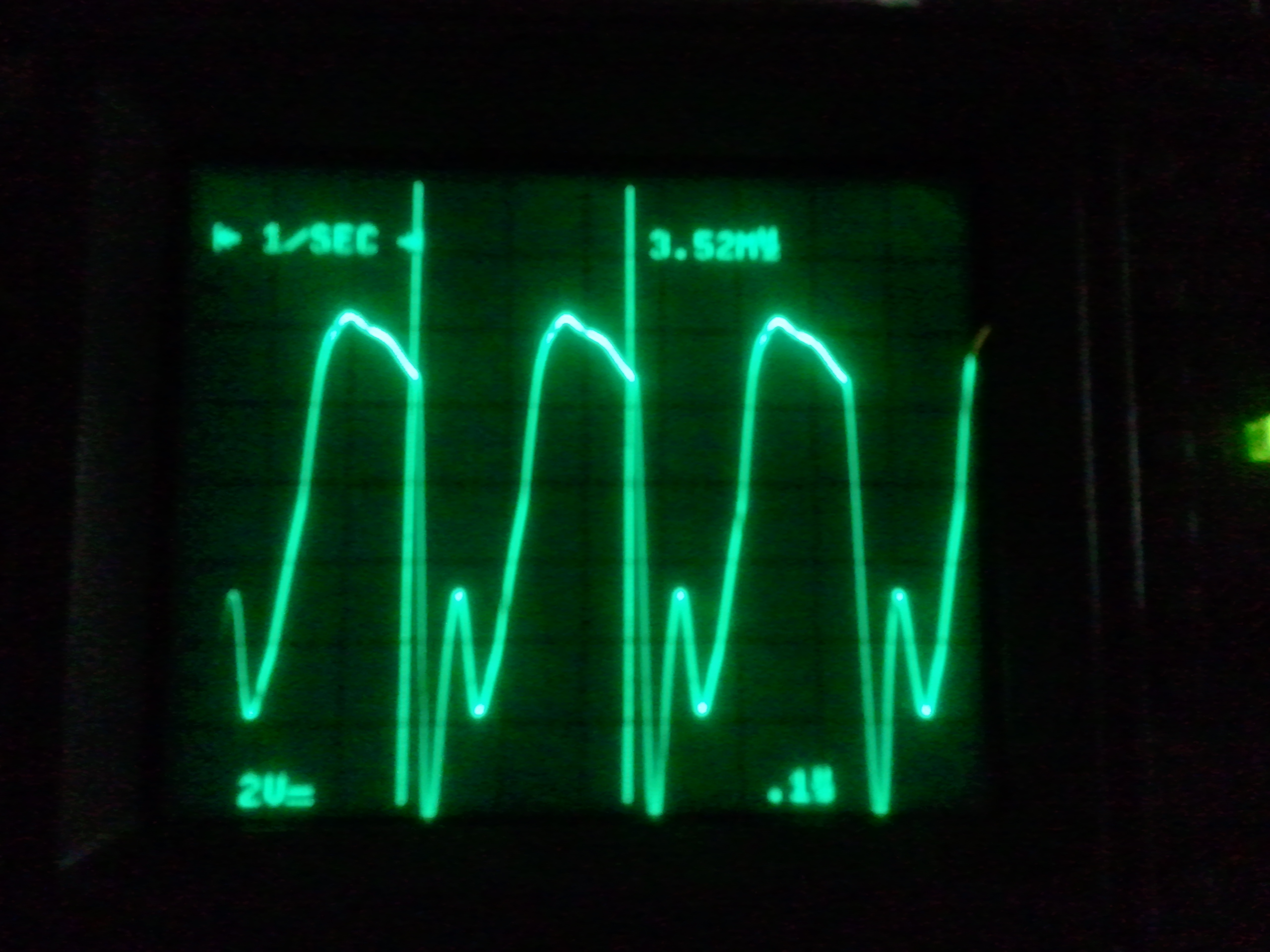“If it ain’t broke — TWEAK IT!”
— Some anonymous geek
With my 555-based computer (or at least memory) entry, I figured I had a pretty decent shot at doing well in the “complex” category of the 555 contest — but I was having trouble thinking of a suitable entry for the “minimalist” category. It seemed that most of the interesting minimal uses had probably been thought of long ago by folks far better versed in analog design than I was.
At the same time, I happened to be reading an article (on Tom’s Hardware, I think) about PC performance tuning. I looked at the can of compressed air on my desk, mentally turned it upside down — and I had my idea. Let’s see how fast this thing will go, given insane cooling and, if need be, a healthy dose of voltage! (The 555 is specified to run on up to 18V, so there should be a lot of room there.)
With a reasonably-well-stocked (but not professional) home lab, as well as the time constraints of the 555 contest, I was limited to breadboarding the testbench, rather than building a nice, stable circuit board for proper overclock testing. (Besides, this isn’t my main entry in the contest — just a fun little side project. The main one is a fun, bigger project!)
The first step was to go for a fast, but not *too* unreasonable, overclock. First stop: 800 kHz. This is already 8 times the highest “official” frequency shown at the top of the frequency-vs-RS-values chart in Figure 14 of the NE555 datasheet. This was fairly easily obtained, although the waveform was less than clean.
From there, voltages and resistor values were tweaked and capacitors replaced (and eventually removed altogether!); screen captures were made at 2.14, 2.50, and 2.88 MHz…
Finally, I decided to see what effect subzero cooling would have on the obtainable frequency. A few blasts with the compressed-air can turned upside down, and the 555 circuit was nice and frosty. A few more tweaks while running this cold — and voilà: 3.52MHz! (See screenshot).
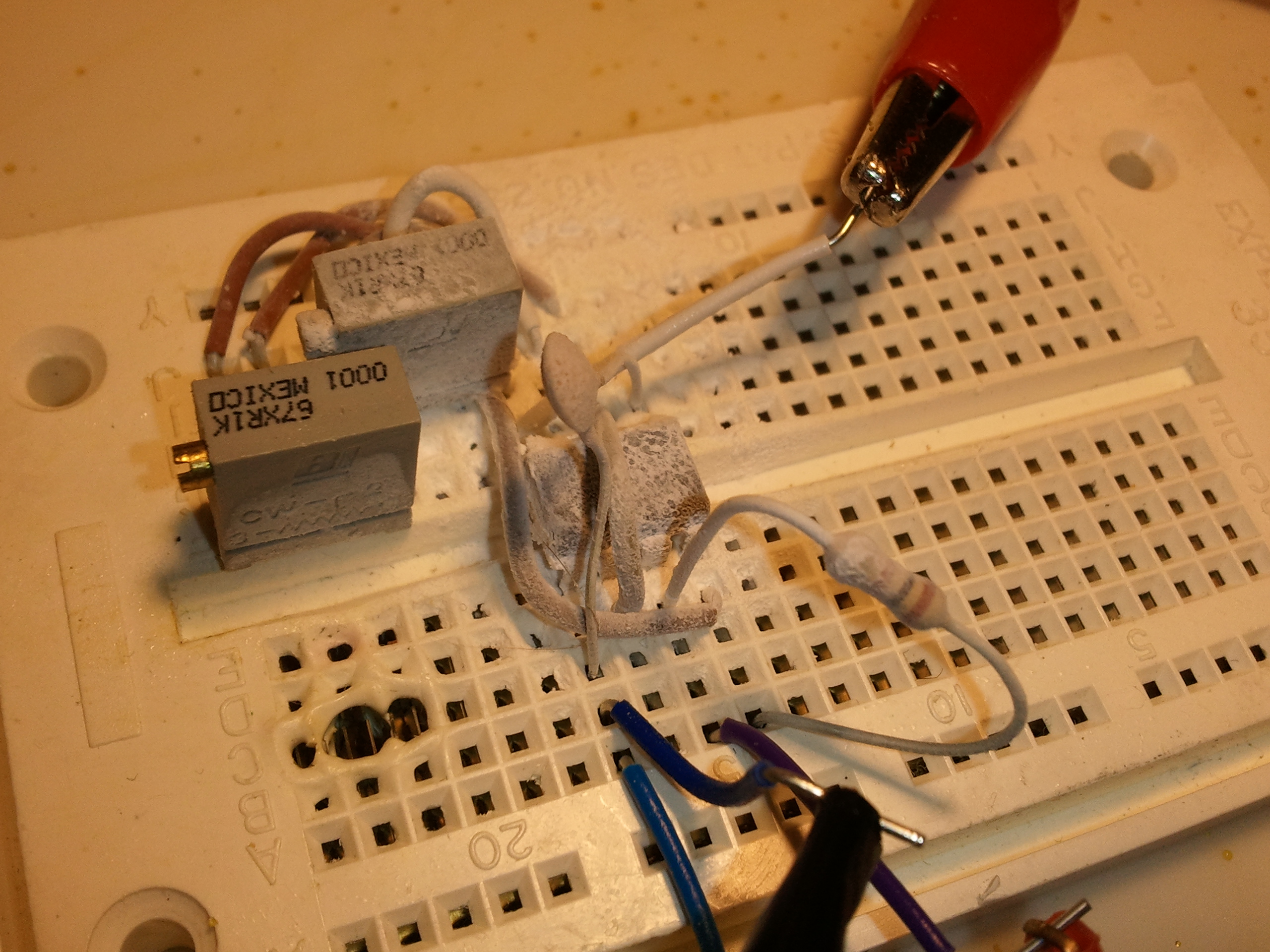
A very cold 555. (The crater at lower left is from a previous misadventure involving way too much current running through a transistor.)
Note the lack of the usual astable-mode capacitor from Pin 6 to ground. Only the control capacitor on Pin 5 is present; stray capacitance is used as an active component(!) This was discovered by mistake; I was switching out the astable-mode capacitor, and found that it kept right on running with no capacitor at all (other than the breadboard connections, wires, leads, etc.)
As with any overclocking venture, your mileage will certainly vary. Running this far outside of spec, the results obtained will depend on the particulars of the exact 555 you’re using. So far, I’ve only tried this — and even then, only briefly — with one randomly-chosen 555, so my guess would be that a fair percentage of NE555s can be overclocked at least this well.
Another caveat, of course, is that my only criterion for “success” was frequency of oscillation as measured on my Tektronix 2246 ‘scope. I haven’t tried to actually clock anything from such an overclocked setup.

